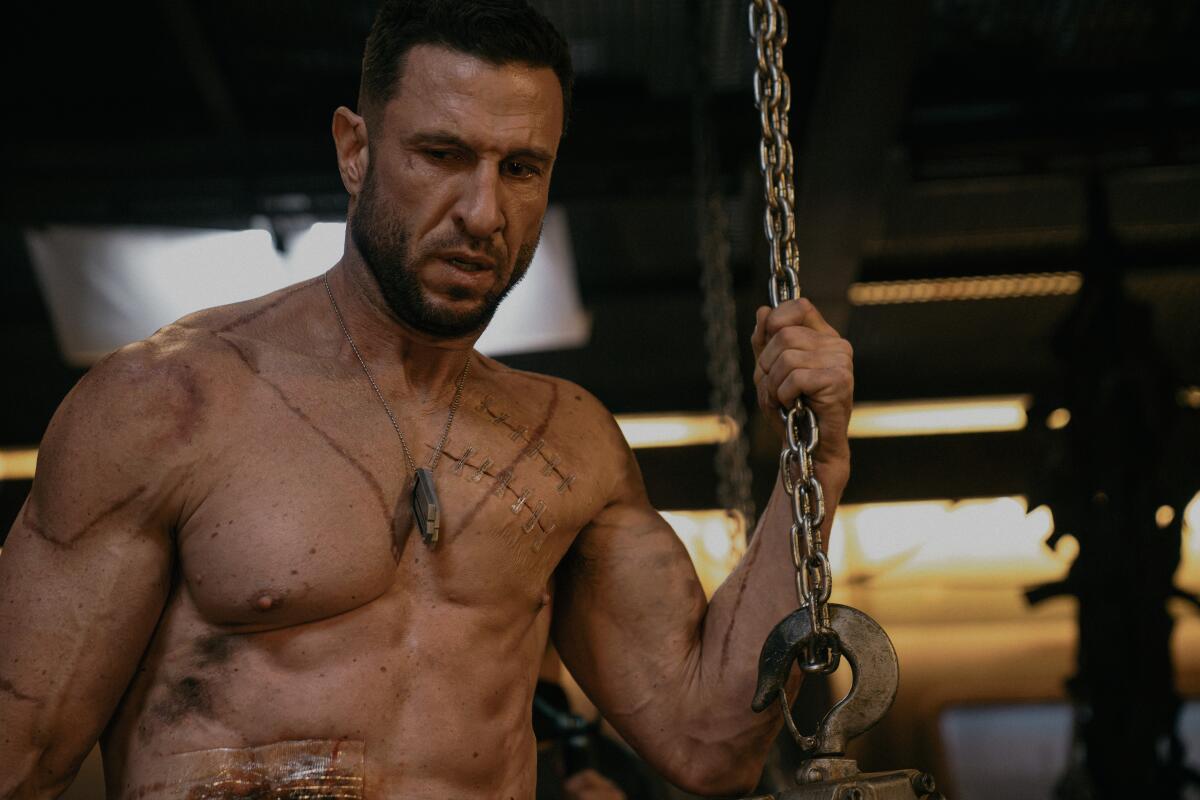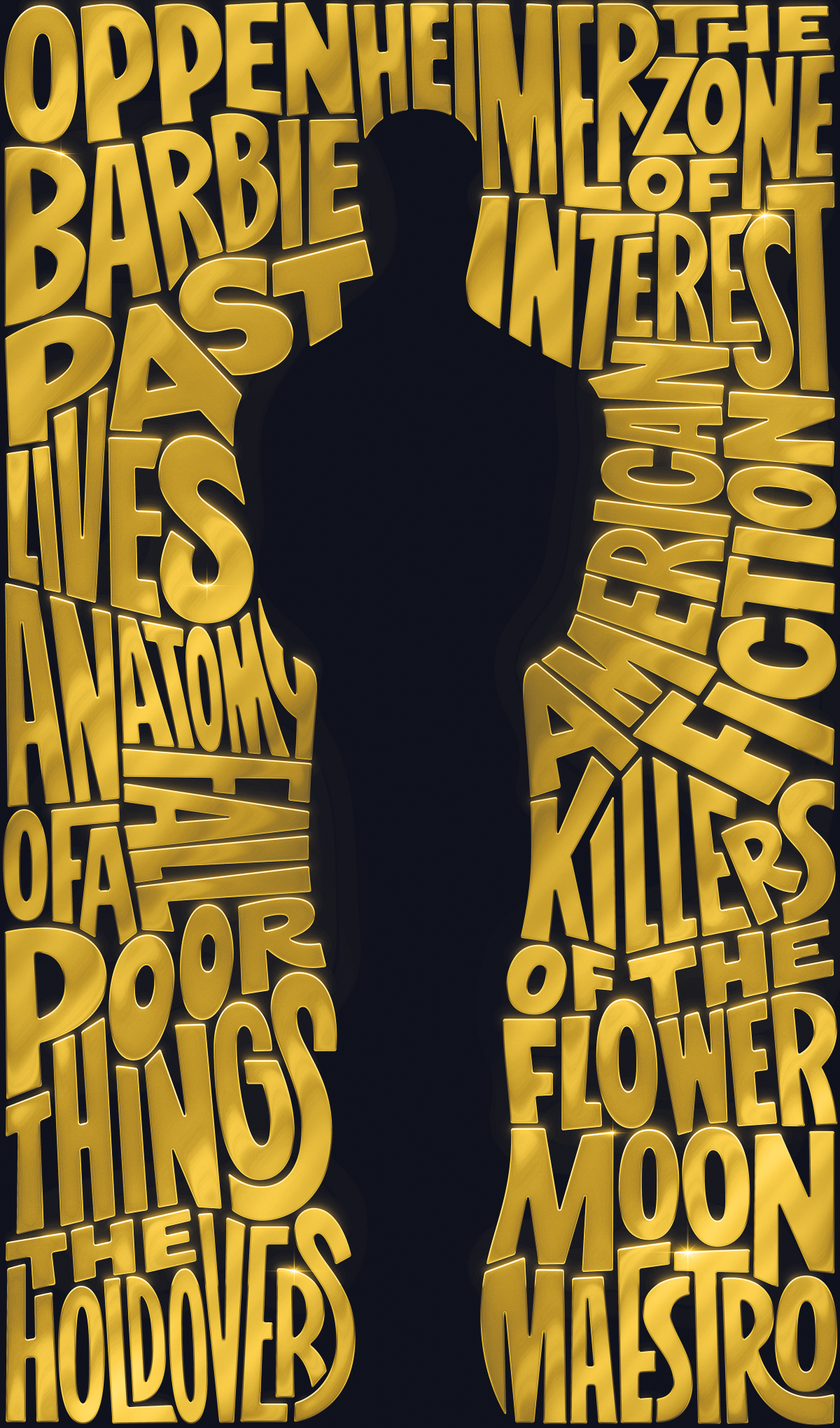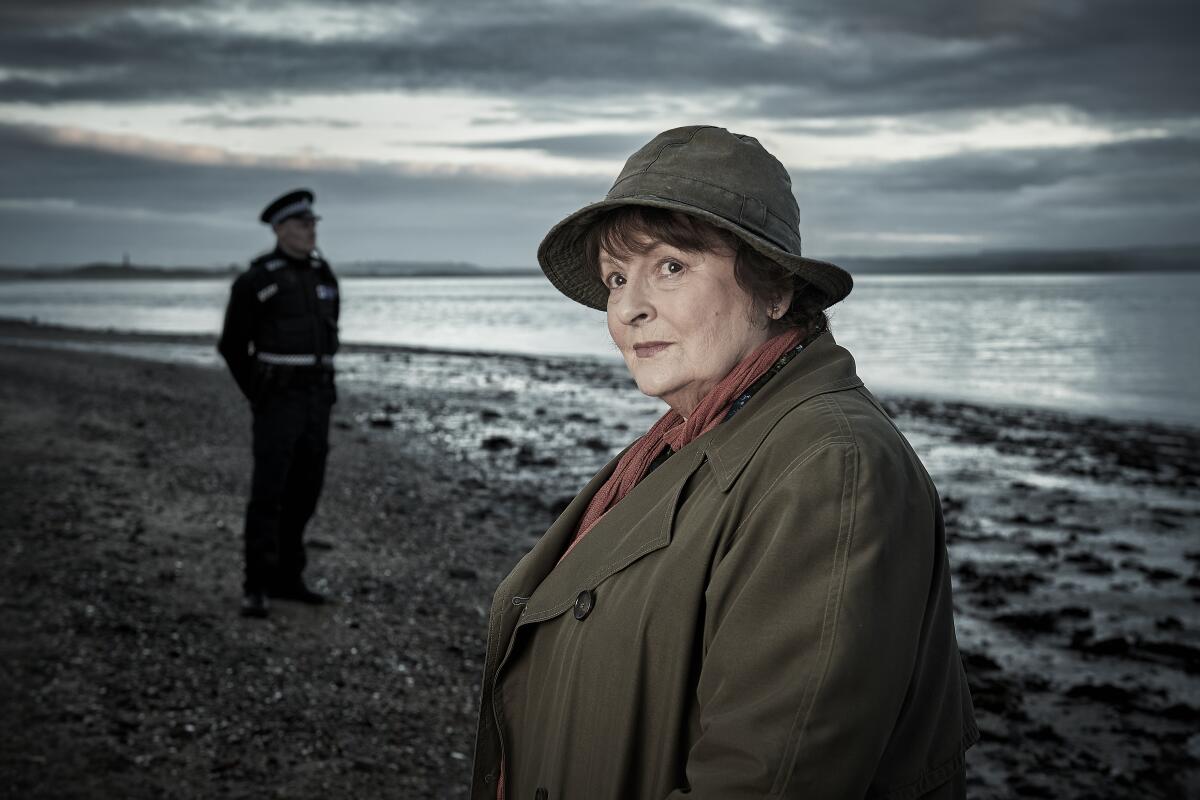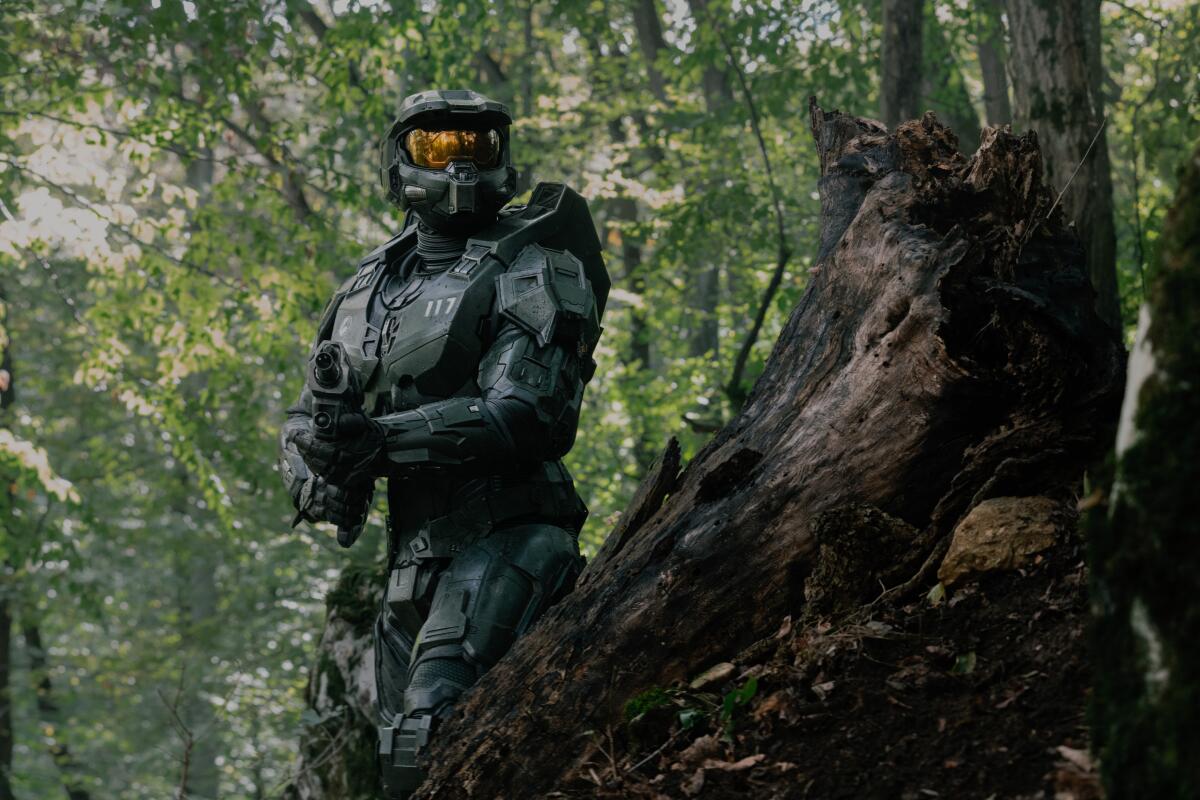‘Halo’ boss explains what it means to see Master Chief without his armor

- Share via
Welcome to Screen Gab, the newsletter for everyone who’s been wondering why we haven’t seen more of Master Chief’s body armor in “Halo.”
As showrunner David Wiener tells senior television writer Yvonne Villarreal in this week’s Guest Spot, it’s intentional: While the video game series that made the character famous finds him in constant combat, the TV adaptation, now in its second season, hopes to explore Master Chief’s life away from the front lines — and use that duality to create dramatic tension.
Also in Screen Gab No. 122, our editor praises the delicious emotional destruction wrought by Netflix romance “One Day,” plus an inventive animated series and a beloved murder mystery to stream.
You are reading Screen Gab newsletter
Sign up to get recommendations for the TV shows and streaming movies you can’t miss, plus exclusive interviews with the talent behind your favorite titles, in your inbox every Friday
You may occasionally receive promotional content from the Los Angeles Times.
ICYMI: Oscars Preview
Prepare for Sunday’s Academy Awards telecast with stories from our Oscars preview

Final predictions for all 23 categories: The question now, heading into the 96th Academy Awards on Sunday, is how many Oscars will “Oppenheimer” win from its 13 nominations?
What should win at the Oscars? A critic submits a purely personal ballot: Pundits have several races already pegged, but here are the films that ought to leave triumphant — as well as some that deserved to be in the conversation.
A new casting Oscar electrified film fans. It could end up being a double-edged sword: In 2026, the film academy will begin handing out an award for casting. We discuss how it could go right — or wrong — and what should win if it were given this year.
Commentary: 84 years after Hattie McDaniel, the Oscars still put Black women in a box: Academy members still have a troubling tendency to reward Black women for playing supporting, even subservient roles in other people’s stories — and little else.
Turn on
Recommendations from the film and TV experts at The Times

“Bravest Warriors” (YouTube)
Conceived by Pendleton Ward and developed by Breehn Burns with Chris Viscardi and Will McRobb (“The Adventures of Pete & Pete”), “Bravest Warriors,” a sort of sexier sci-fi cousin to Ward’s “Adventure Time,” has played hide-and-seek with fans since premiering on the YouTube channel Cartoon Hangover in 2012. It has disappeared behind paywalls, or disappeared completely. Now it is back for all to see, with the first three seasons available in their entirety and a fourth season — produced as traditional television in 2018 by the Canadian animation house Nelvana — unrolling episode by episode on the Cartoon Hangover channel. (That season is considered somewhat controversial for its new creative team and digital animation; on the other hand, 52 episodes were produced.) The series follows 31st-century teenage adventurers Beth, Chris, Danny and Wallow as they travel “the space-time calliope,” dealing with strange aliens and their own complicated emotions; like “Adventure Time,” it is poetic, mysterious, mythological, romantic, dark, sweet and unbeholden to reason. And it is home to Catbug, part cat, part ladybug and the cutest creature in this or any other animated universe. —Robert Lloyd

“Vera” (BritBox)
The 13th season of ITV’s murder mystery series “Vera” has finally debuted on BritBox, and I am not ashamed to admit I was counting down the days. Based on the Ann Cleeves novels and starring the incomparable Brenda Blethyn as the rumpled, prickly and deeply humane Detective Chief Inspector Vera Stanhope, each 90-minute episode offers a twisty-smart murder investigation, vividly portrayed supporting characters and the gorgeous (if often exceedingly damp) landscape of England’s Northumberland. Not to mention the comforting sight of Vera’s squashed bucket hat and the most famous trench coat since Columbo’s.
This season, the jarring absence of Detective Sergeant Aiden Healy, played for seven seasons by fan favorite Kenny Doughty, is softened by the much-anticipated return of David Leon’s Joe Ashworth, who served as Vera’s sidekick for the first four seasons. The reunion gets off to a bumpy start — Joe, now a detective inspector, announces he is there to review team procedures, and Vera, obviously, is not well pleased. She always had a more contentious, if essentially fond, relationship with Joe than she did with Aiden, which means viewers are treated to the tetchy and tart-tongued Vera of earlier seasons. Though, as every episode makes clear, Vera is not just a brilliant sleuth. She’s that rare detective who sees the human cost of every murder and quietly takes care of those left behind. —Mary McNamara
Catch up
Everything you need to know about the film or TV series everyone’s talking about

As the dearest romance buff in my life texted the group chat recently, “One Day” (Netflix) should come with a trigger warning: Nicole Taylor’s adaptation of David Nicholls’ novel, which stretches the “will they/won’t they” tension between Emma (Ambika Mod) and Dexter (Leo Woodall) over more than a decade, is equal parts diabolical and delectable in its tortures. From an abortive postgraduation hookup in 1988 into the new millennium, the series’ 14 episodes — each set on the same day, July 15 — breathe life into a gimmick that Lone Scherfig’s 2011 feature, starring Anne Hathaway and Jim Sturgess, could not, in part by leaning on the viewer’s exasperation (not to mention a brazenly manipulative soundtrack of the era’s pop hits). With Mod and Woodall effortlessly channeling the bookish women and rakish men of countless onscreen affairs, “One Day” scratches our sadomasochistic itch for love to stumble, shrivel, flail, flop, to stab us in the heart over and over again as we run into its knife.
Indeed, though it’s been mistakenly labeled a rom-com by some, the series demonstrably darkens as not just Emma and Dexter’s friendship but also their career ambitions, family ties and romantic relationships hit the shoals of advancing adulthood. What held me in thrall was the frequently dashed hope — close in intensity to nostalgia — that they might recapture the magic of that first meeting. For as we’ve all learned from Shonda Rhimes, among others, the “rude and sarcastic and twitchy” girl is beautiful, and the brash playboy is deeper than he appears, and if you turn on the right mixtape on the right night at the right moment you might fall in love for one day, or a lifetime, or some span in between. At the least, you can convince yourself of that, and enjoy the pleasurable pain of being wrong and still holding out hope anyway. —Matt Brennan
Guest spot
A weekly chat with actors, writers, directors and more about what they’re working on — and what they’re watching

While “Dune: Part Two” is dominating the box office, another futuristic, galaxy-spanning tale is nearing the finish line of its second season on the small screen. Based on Xbox’s billion-dollar blockbuster franchise, “Halo” (Paramount+) stars Pablo Schreiber as Master Chief Petty Officer John-117, the central character in the main games. David Wiener (“Brave New World”), who took over showrunning duties for the drama’s sophomore season, stopped by Screen Gab as the season nears its finish line to explain all that screen time of Master Chief out of uniform, his philosophy on adaptations, and what he’s watching. — Yvonne Villarreal
READ MORE: Running the Show: The writers behind your favorite TV shows explain how they made them
Are there any lessons you gleaned from other video game adaptations in film or TV that you applied to your approach with “Halo”?
All the work that went into “Halo” before I got the job allowed me to see what translated most effectively from the interactive medium of the game to the dramatic medium of TV. A lot has been written about what makes that translation so challenging. But I think it’s about tone. What often gets lost in adapting big IP like “Halo” is the specific feeling of what it’s like to inhabit the world of the game. In “Halo” a lot of that feeling comes from the perspective of the player and the immediacy of the first-person experience. I embraced that. In writing and filming this season of “Halo,” we were very intentional about maintaining a subjective perspective. That means we’re never outside of the experience of our main characters. We don’t know things they don’t know. We don’t see things they don’t see. It’s sometimes a challenge to tell a story within those confines but it creates a lot of mystery and dramatic tension. And we embraced that same dogma in our action sequences. We only see what the soldier sees in the fight. The intention is to immerse our audience in the confusion, the cacophony, the fog of war. It should be kinetic, like when you’re playing “Halo.” We want you to feel it.
Which episode that has aired so far were you most focused on, in terms of how people reacted to it?
I’d say Episode 4, “Reach.” This season centers on the “Fall of Reach” which is a very significant event within the wider “Halo” lore. The TV show exists in a timeline that’s distinct from the games, so we had to find a different path in order to arrive at the event in a way that felt organic and dramatic. We certainly knew the episode had to deliver all the action and spectacle of a Covenant invasion and city’s collapse. More importantly, the episode had to achieve a level of emotional resonance equal to the implications of the event. So it was wonderful to see so many people feeling the emotional impact and leaning into their connection with our characters. The second half of our season continues to build on the fallout from “Reach,” so hopefully everyone who has made it this far feels the episodes just keep getting better and richer. And trust me, there is more spectacle to come.
There’s been a lot of fan discussion about why Master Chief rarely wears his iconic armor in the show. Can you walk me through what exactly that choice means to you, and how that fueled the way you wanted to explore certain things as you got deeper into the season? What are the challenges of striking the balance in giving viewers access to his face, while also showing a helmeted character can be a compelling figure?
Master Chief removes his helmet in the first episode of the first season. There may be a version of the show where Master Chief never takes off his armor, but that’s not the show I joined. In the games, Master Chief is always in his armor because he is always in combat. The TV show is focused on exploring the experiences of our characters beyond the battlefield. And it’s important to remember that this isn’t just an adaptation of a video game — there is a whole expanded universe of novels and comics that we draw from, and in many of those we find Chief outside of his armor.
This season we’re telling a story about two different characters — the Master Chief, the armored super-soldier who kicks ass and puts it all on the line for the future of humanity, and John-117, the man who was stolen from his family as a child and fashioned into a weapon. I’m fascinated by the inherent tension between these two halves. While the games only focus on the Master Chief side of this duality, our TV series derives story from the conflict between Chief and John. In several ways, this season is about John-117 reckoning with Master Chief. For the first time he begins to ask himself who he really is as a man and why he fights.
What have you watched recently that you are recommending to everyone you know?
Recently I’ve been watching a lot of “Alone” [History Channel]. It’s a competition reality show in which 10 people are left to survive in some truly unforgiving places. No camera crews — they film themselves. I find the resiliency, resourcefulness and ingenuity of these folks to be totally inspiring. Oh, and they have to outlast each other without ever knowing the condition of their competitors or how many people are left. It’s intense. (And there’s some amazing bushcraft too, if that’s your thing.)
What is your go-to “comfort watch,” movie or TV show you go back to again and again?
I find comfort in rewatching the shows and movies that astonished me when I saw them for the first time. I rewatch “The Sopranos” [Max] every few years. I love “Station Eleven” [Max], “Patriot” [Prime Video], “Generation Kill” [Max] and anything by A24.
The complete guide to home viewing
Get Screen Gab for everything about the TV shows and streaming movies everyone’s talking about.
You may occasionally receive promotional content from the Los Angeles Times.



